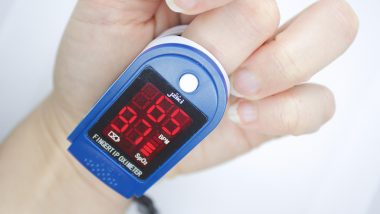With a sharp rise in new cases of COVID-19 in India, the second wave of the pandemic has hit the nation hard. Despite rapid testing and extensive vaccination drives undertaken by the government, the daily caseload of infected people has increased to lakhs. With the virus taking centre stage in our lives, oximeters have become scarce. Most chemist shops ran out of stock last month, and many were reportedly selling them at an exorbitant price. Amid the rising COVID-19 cases, pulse oximeter, too, became one among COVID-19 essentials at home. But how to use it? What is SpO2? What is the expected SpO2 level on an oximeter? In a bid to ease your understanding of this medical jargon, here we answer all the Frequently Asked Questions (FAQs), amid the COVID-19 second wave.
What is an Oximeter?
A pulse oximeter measures your oxygen saturation level or the oxygen levels in your blood. The pulse oximeter is a small, clip-like device that attaches to a body part, like toes or an earlobe. It is most commonly put on a finger.
What is SpO2?
SpO2 refers to the oxygen saturation level, -- a measure of the amount of oxygen circulating in blood vessels that help us in breathing. Our body needs a certain level of oxygen in the blood, otherwise, it will not function as efficiently. In fact, very low levels of SpO2 can result in very serious symptoms.
What is the Expected SpO2 Level in Oximeter?
According to healthcare researchers, the normal level for SpO2 is considered between 95 and 100. If the levels fall below 90, it is significant to take medical consultation from doctors. If blood oxygen level goes outside the typical range, one may begin to experience shortness of breath, chest pain, headache, rapid heartbeat.
What is a Normal SpO2 Level?
The normal pulse oximeter readings usually range from 95 to 100 percent. Values under 90 percent are considered low.
Can You Increase SpO2 Naturally?
For people, who are COVID-19 positive and are in home isolation, the Indian Health Ministry suggests ‘proning’ to help increase oxygen levels and keep them in the safe zone, (above 94%). Besides, breathing exercises like pursed-lip breathing and deep belly breathing can help open airways and increase the amount of oxygen in your body.
How to Do Proning Correctly?
Proning as an aid to help you breathe better during #COVID19 pic.twitter.com/FCr59v1AST
— Ministry of Health (@MoHFW_INDIA) April 22, 2021
Now that you are aware of the basic details related to SpO2, what is it, what is the expected level, and more, share this information with your close ones. The ongoing situation is challenging, but we can survive the second wave by following the necessary protocols, keeping the essentials at home, staying connected with families and friends, and most importantly staying calm. We are in this together!
(The above story first appeared on LatestLY on May 12, 2021 06:52 PM IST. For more news and updates on politics, world, sports, entertainment and lifestyle, log on to our website latestly.com).













 Quickly
Quickly


